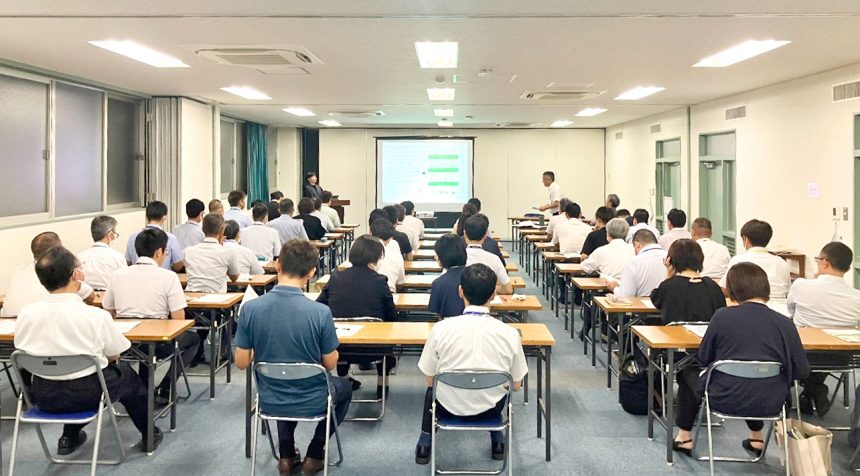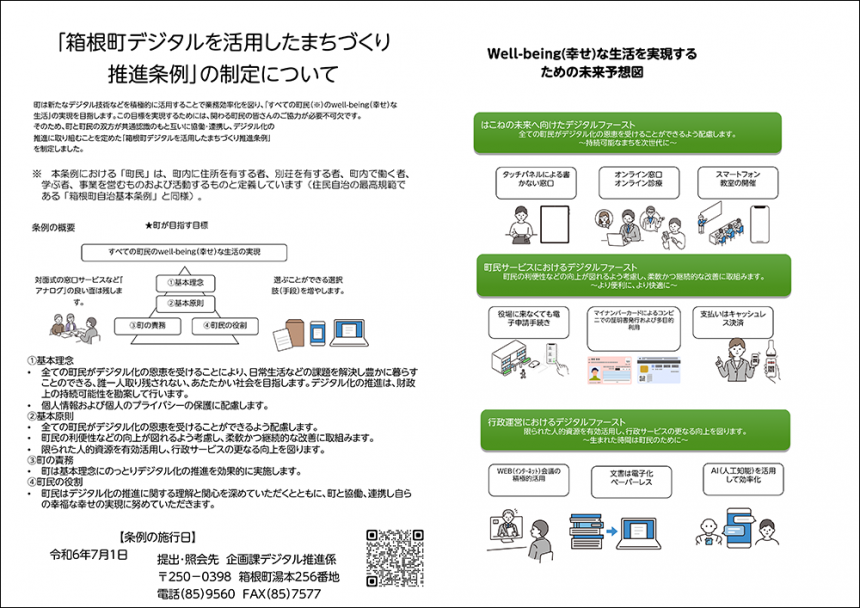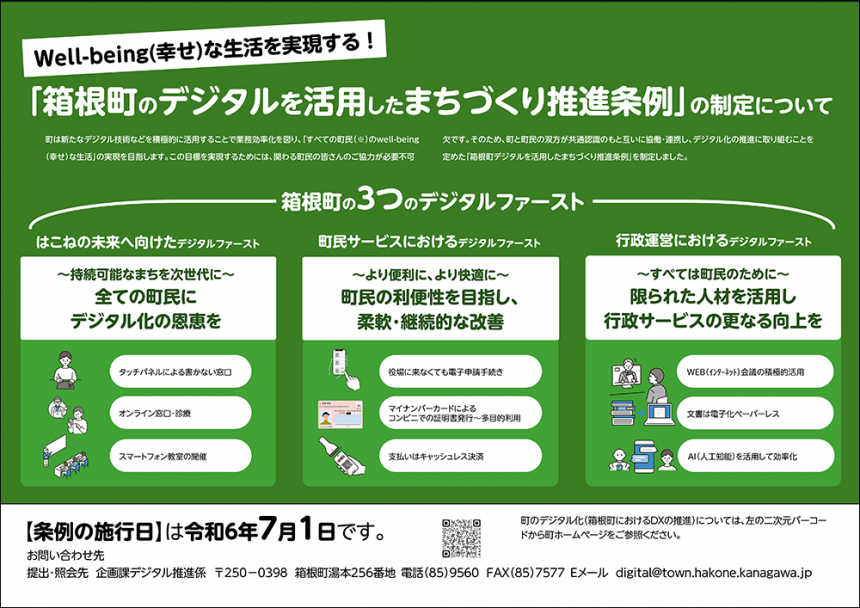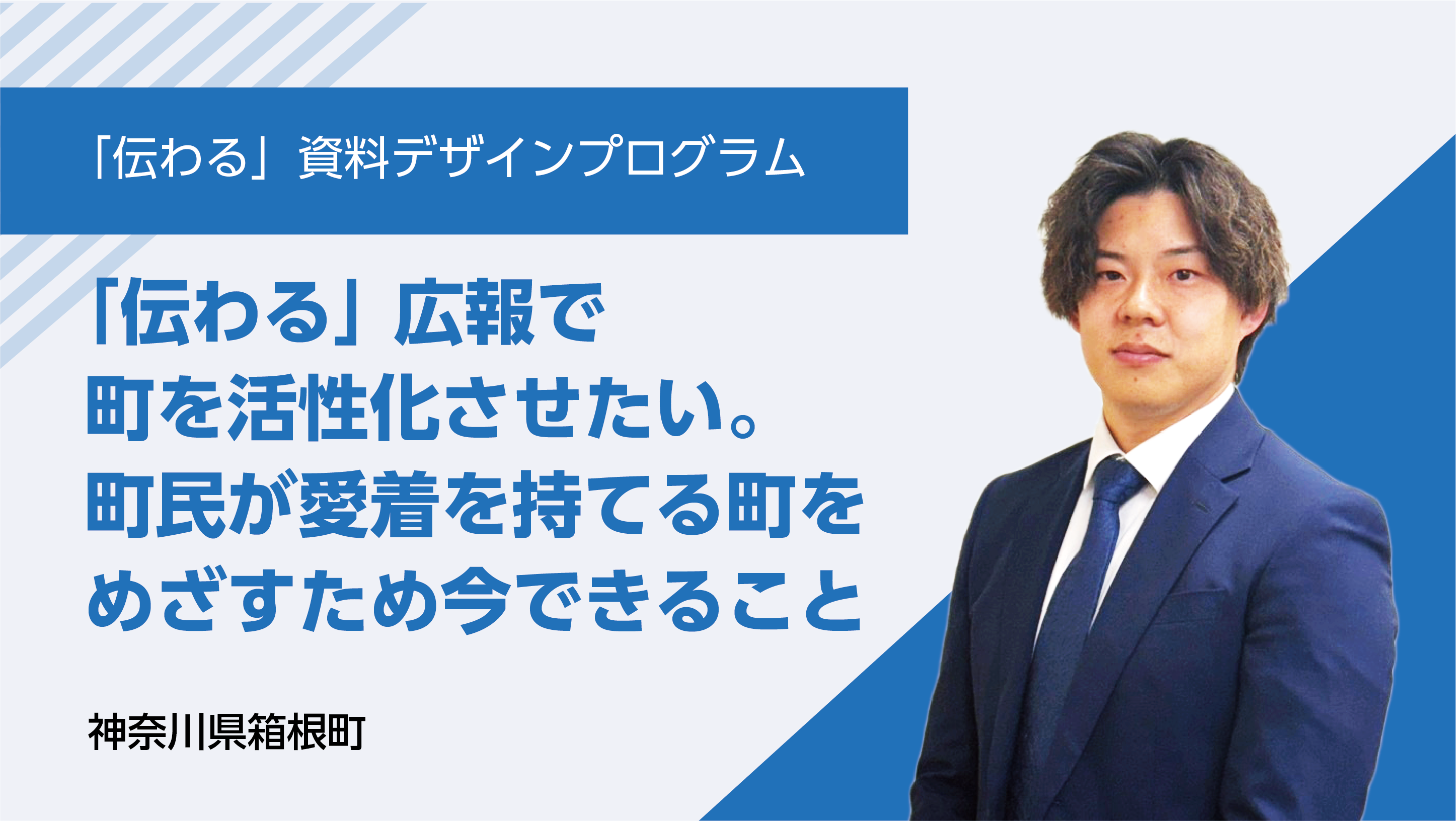
This time we interviewed Mr. Katsumata from the Hakone Town Planning Division.
Hakone Town is located in the southwestern part of Kanagawa Prefecture, about 80 kilometers from Tokyo. It borders Minamiashigara City to the north, Odawara City to the east, Yugawara Town to the south, and three cities and two towns in Shizuoka Prefecture to the west, making it one of the leading tourist destinations in Japan.
Katsumata, who attended a seminar hosted by Morisawa in 2024, requested that he hold a public relations study session for managers, and Morisawa assisted with everything from planning to running the session.
We spoke to them about the challenges and goals that led to the study session, as well as the vision Hakone is aiming for as a town and its hopes for the future.
To get young people interested in the town
Q. Please tell us the background behind Hakone Town's holding of the study session, as well as the current situation and challenges.
Katsumata: Currently, Hakone Town's main information dissemination medium is a newsletter, which is mainly sent as a newspaper insert. This means that we need to consider and devise ways to deliver government information to the younger generation, who are increasingly turning away from newspapers.
However, the issue with disseminating information in our town is that the awareness and sense is closer to "just posting information" rather than "to get people interested and actually take action." I believe that if there was more awareness of delivering information (from a public relations perspective), the information would reach a wider range of generations by piqued their interest.
I want all staff to be aware that they are responsible for public relations.
Katsumata: I attended Morisawa's seminar at a time when we were reviewing various aspects of our public relations efforts, and as a public relations officer, I was trying to share new perspectives within the agency, but I felt that there were limits to what I could do alone and share information evenly.
Therefore, I wanted to hold a Morisawa study session within the agency, hoping that each and every employee would be aware that they are in charge of public relations, and so I asked for their cooperation. I didn't have a public relations awareness or perspective from the beginning, but I developed it through various training sessions, so I wanted this to be a good opportunity to foster that awareness.

To foster a public relations mindset among decision-makers and create an environment where each department can provide guidance to each other
Q. What did you think of this study session? Did you notice any changes, Katsumata?
Katsumata: This time, we held a study session for managers who make decisions. There were two purposes. The first was to raise awareness of public relations among managers.
Perhaps it's a characteristic of civil servants that public relations materials tend to include as much necessary information as possible, which means that people don't want to read them. However, if managers' awareness of public relations increases, when each person in charge proposes a new layout or an innovative design to attract interest, they will be able to discuss various ways of expressing themselves.
The other is to review public relations materials that follow precedent and establish a system in which each department can provide guidance to each other.
After the training, there was a lot of positive feedback from employees. 99% of those who took the training said, "It was meaningful, and I would like to see more training for those in charge," making it a very satisfying study session for participants.
For those in charge:"Communicative" Document Design ProgramWe are currently in the process of preparing to hold this training, and we hope to hold it in the near future in order to foster a public relations awareness within the agency and to enable the dissemination of information that will "reach" the residents.
Morisawa: It was a wonderful opportunity for our managers to experience firsthand the importance of information that can be conveyed, and how with a little ingenuity and a different perspective, anyone can create "materials that can be conveyed." Thank you for this valuable opportunity.


Based on the notice created by Hakone Town, Morisawa instructors remade the materials to be more easily understood. Before/after
Sharing what was learned at the Municipal Academy training session within the city government
Q.What efforts have you made so far?
Katsumata: Up until now, I have been involved in creating a guide for publishing in Hakone Public Relations and revamping the article submission format. When I first became responsible for public relations, I had many aspirations, such as wanting to create a newsletter that would appeal to young people, and I thought I could do it with little tactics, such as coming up with a cover that had never been seen in Hakone Town's previous newsletters. I thought that if the design changed, young people would read it, and looking back, it was a naive idea (laughs).
Meanwhile, I participated in a training session held by the Municipal Academy, which brings together public relations personnel from all over the country, and through the training I realized that Hakone Town did not have a "public relations strategy." I thought that things could change dramatically if the town communicated and shared a public relations strategy within the town hall.
Creating the "Hakone Public Relations Publication Guide" and the difficulty of making it a standard
Katsumata: So after the training, we immediately shared the "Hakone Public Relations Publication Guide," which outlines the Hakone Town edition's public relations strategy, publication intentions, and rules, within the town office. However, it didn't take hold and we were feeling frustrated, so we decided to take part in a training session hosted by Morisawa with Mr. Sakuma, a former resident of Miyoshi Town, Saitama Prefecture.
During the training, I heard that a submission format for publishing articles had been established, and I decided to adopt it in Hakone Town as well. I thought that if we incorporated the important points outlined in the "Hakone Public Relations Publication Guide" (such as asking readers to state their intention for publishing) into the submission format, the intention would be conveyed even without reading the guide, so we "revamped the submission format." Although it has only been in place for a short time, we are already seeing results.
To continue improving, we will update our manuals and submission formats, and hold training sessions to help people learn how to disseminate information in an effective way. We hope to gradually ``establish a public relations mindset within the agency,'' which will lead to residents taking action and participating when information about various services and events is shared, and this action will revitalize the community.
A good project is nothing if it is not communicated to the target audience.
In order to give back to residents, delivering information plays a very important role
Q.What kind of Hakone town do you want to aim for in the future? Please tell us your thoughts for the future.
Katsumata: The population is aging and the birthrate is declining nationwide, and Hakone is no exception. For this reason, the town is taking various measures, such as policies to encourage young people to move and settle in the area, and policies to reduce the burden on families with children.
However, I wonder whether these town initiatives, including those mentioned above, are being properly communicated to those who need to know about them.
No matter how useful and good a project you are conducting, it is as good as nothing if the residents and stakeholders do not know about it. In order to give back to the residents, it is your duty to properly communicate information, and this is a very important role.
Hakone Town is famous nationwide for its tourism and there is a lot of information about it, but on the other hand, when it comes to daily life, it feels like the town has policies that are comparable to those of other cities and towns, but these policies are not being fully communicated both within and outside the town.
We believe that disseminating information will lead to regional revitalization, so we are working to do what we can through our newsletter.
We want to involve residents and aim to disseminate information in a coordinated manner across all media.
Q.Please let us know if there are any regional branding projects you would like to undertake in Hakone Town in the future.
Katsumata: We are still exploring the specifics, but we would like to change awareness across many media outlets related to information dissemination, including not only the newsletter but also our website, social media, etc., and disseminate information in a way that links all of them together.
We believe that by reaching residents who need information about town projects and events, getting them interested in and attached to the town, and getting them involved, we can promote the city, leading to local revitalization and encouraging people to move and settle there, and ultimately helping to solve the issues facing the town.
Morisawa: When I first heard you speak at a seminar hosted by Morisawa, I was amazed at how much you took action after being shocked by the training session at the Municipal Academy. You created the "Hakone Public Relations Publication Guide" in just two months and distributed it throughout the city hall. I was so impressed by your initiative that I wanted to share it with everyone. You don't use being busy as an excuse, and once you decide to do something, you just do it!
We had the opportunity to introduce our training to them as they struggled to spread the "Hakone Public Relations Publication Guide," which was created with great passion. We hope to continue working together to coordinate the overall dissemination of information.
In the future, they hope to promote the city by involving local residents.
We at Morisawa hope to help create a town where the residents of Hakone feel attached to the town they live in and want to continue living there, through our fonts.
Notice
Training to improve public relations skills! Design Program for "communicative" materials
Morisawa has launched a training program for public organizations, school staff, faculty members, and companies this year to help them design materials that "communicate" with the public.
This is a training program by a font maker that explains the art of document creation in an easy-to-understand, logical manner, and supports the development of document creation skills that do not rely solely on good taste.
For more information, along with municipal case studies, seehere (place close to the speaker or where the speaker is)for more information.
Municipal Enactment Font to enhance local branding
At a time when municipalities are required to diversify their information disseminationFace (brand image)To clarify theVoice (font)Why not strengthen your local branding by unifying the
Effectiveness of Municipality-established Fonts
Strengthen local branding
Smooth city promotion
Establishment of regional identity
Fostering Civic Pride

For more information.here (place close to the speaker or where the speaker is)Please refer to the documents in the following section.

